Depending on the design of the board, surfboard fins - from fin configurations to design - can vary a great deal and have a major impact on your surfing. Picking the right set of fins for your board and the waves you surf can really help you progress in your surfing! With so many different boards and different types of surf conditions, picking out the right pair of fins for your board can be tough. This Guide to Surfboard Fins will help eliminate some of the confusion and help you make the right decision when choosing a new pair of surfboard fins, and ultimately help you get the most out of your surfing!
FIN SYSTEMS
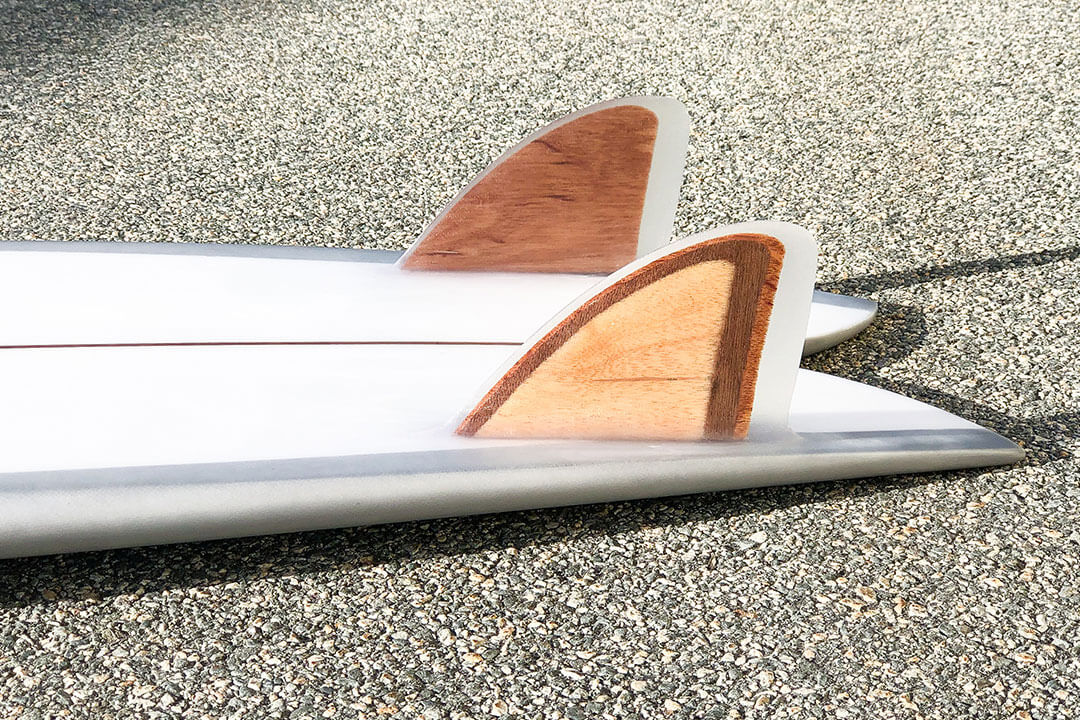
GLASS-ON FINS
Glass-on fins are surfboard fins that are laminated into the surfboard when the surfboard is being built. These offer a smoother/more predictable feel when surfing, however are not removable. This can be an issue when traveling, as a broken glass-on fin can be a nightmare to repair.
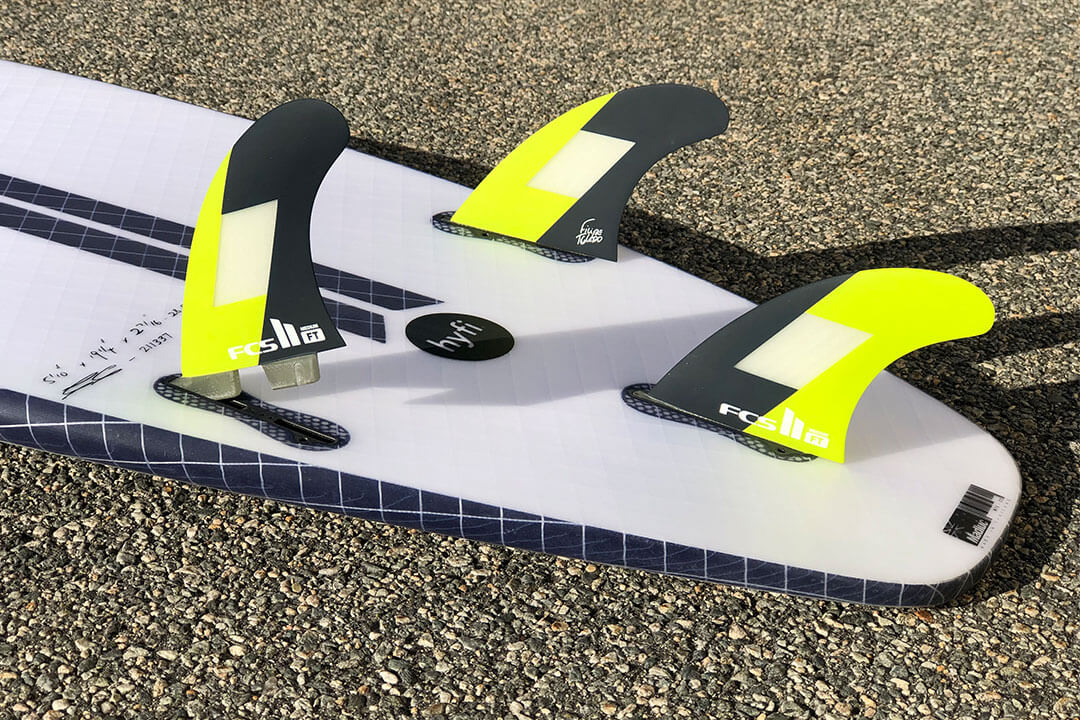
REMOVABLE FINS
Removable fins offer much more versatility when it comes to trying different types of fins. Boards with this system have “fin boxes” installed on the bottom board, allowing fins to be added or removed easily by using a fin key and adjusting a small stainless steel screw (or set screw) set in the fin box. There a multiple different companies that produce these fin boxes, so it is important to know what system you have before looking for fins.
FCS/FCS II VS FUTURES FIN BOXES
The two major fin companies are FCS and Futures. Most shortboards (and longboards for that matter) that you will see on the market today most likely feature one of systems.
The original FCS (Fin Control System) fins featured a two tab system, where both tabs were same size, and are secured to the board with two set screws (one for each tab). Boards featuring this system have either the single FCS plugs or the FCS fusion fin boxes. Although these are different in appearance, they work the same way. FCS also recently release a new system, FCS II, which features a screwless fin box. With FCS II, the fins click right in without having to loosen and tighten a set screw, making them easy and quick to install. FCS II fin boxes are also backwards compatible, so if you have some of the older style FCS fins lying around, all you need is a couple of set screws to tighten them in and you are good to go!
The other major player in the fin market, Futures fins, feature a single, long plug with a truss base along the entire length of the box making it very strong and durable. These fin boxes have one set screw towards the front of the fin, making them quick and easy to install. These finboxes are known to be a bit more durable than FCS boxes, but may cost more to remove in the event they get damaged OTHER...
There are some other types of fin boxes around the world that are less commonly used, such as: O’fishl, LokBox, Star System, etc.. These fin boxes are no longer commonly built into boards, and if you happen to find a board with them installed - good luck finding replacement fins! Some other surfboard manufacturers choose to make their own fin box system as well, such as Libtech surfboards. These fin boxes sometimes compatible with more common fins - i.e. FCS in the case of Libtech.
FIN SETUPS
Surfboards come in a variety of different fin setups depending on the shape of the board. If you flip the board upside down, you can count the number of fin boxes to determine your configuration, ranging from 1-5 fins. Below are the most common types of fin setups.
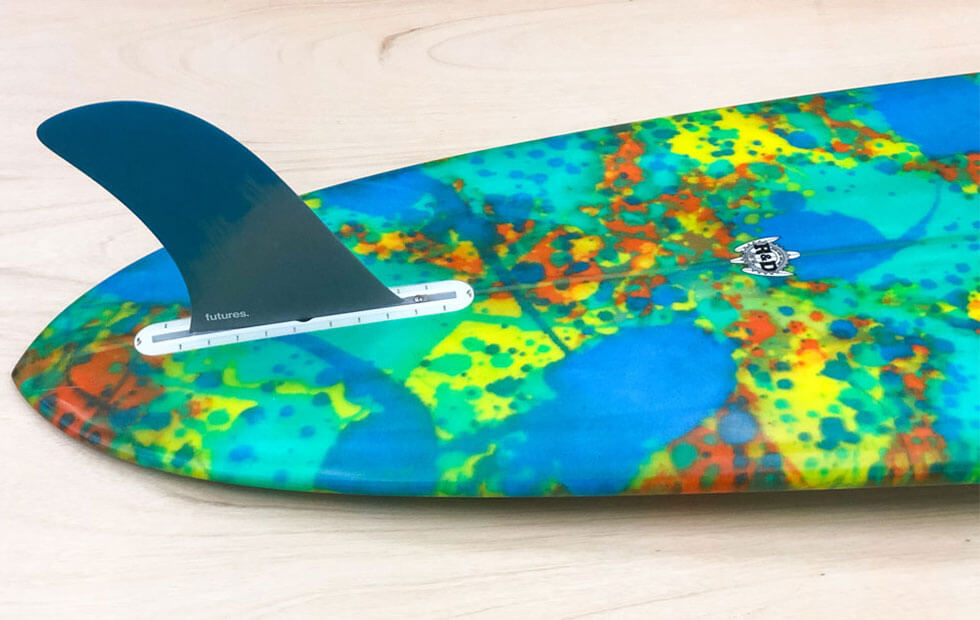
SINGLE
A single fin is most common in longboards, but can also be found in retro shortboards or mid lengths. Maneuverability is limited with a single fin, mainly designed for speed, stability, and point-and-shoot surfing.
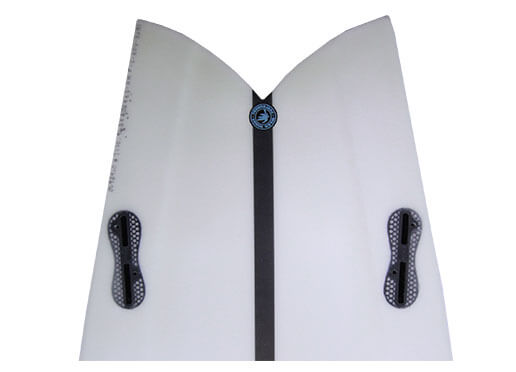
TWIN
Also known as keel fins, a twin fin configuration is often found in small wave boards such as a retro fish. Twin fins are designed to be a bit more playful and maneuverable than a single fin, especially in small and weak waves. In comparison to a thruster or quad set-up, a twin fin setup will feel much quicker, and turns will be more drawn out and have more flow.
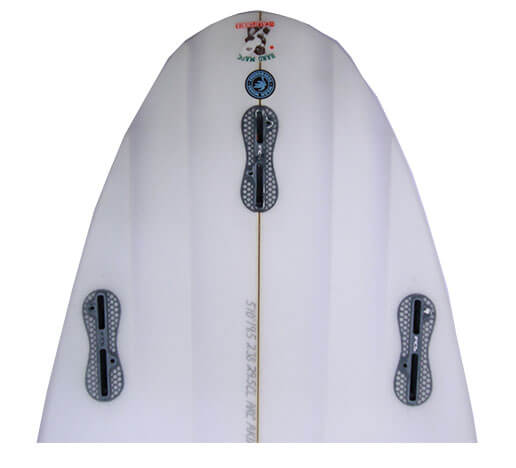
THRUSTER
Also known as a tri fin setup, this is the most common fin configuration in most boards today. Developed by Simon Anderson in 1980, the thruster setup offers ultimate versatility in all types of waves, and has been the standard for high performance surfing for the past 30 years. Allowing for vertical surfing and progressive maneuvers, the thruster fin setup paved the way for aerial surfing.
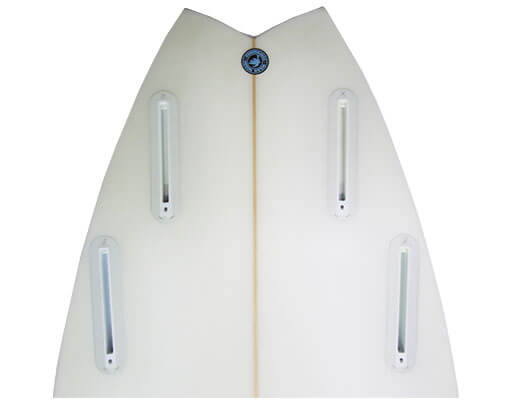
QUAD
A quad fin set-up (like a twin fin) offers a ton of speed compared to a thruster set. With quad fins a surfer does not have to work as hard to generate speed to get down the line as on a thruster, suiting a different style of surfing. Quads also loosen up the tail of the board, lacking the center fin that typically provides control and pivot, making the board feel a bit “skatier” or looser - which can be especially fun in small surf.
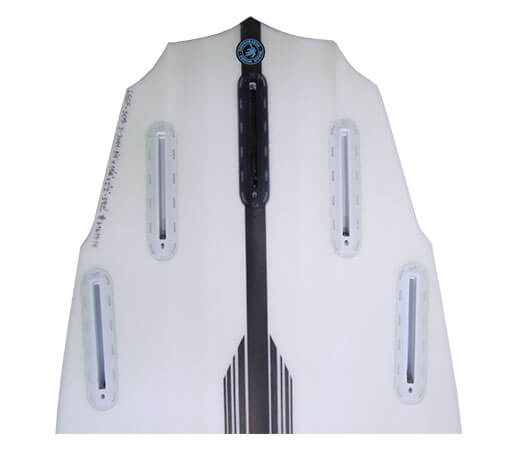
5-FIN
A 5-fin option is becoming increasing popular as the demand for quads increase. This is the ultimate in the way of versatility, allowing you to switch up between thruster, quad, or twin depending on the conditions or your current mood.
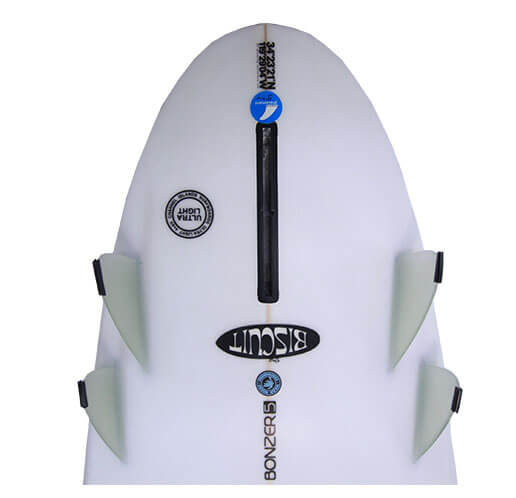
ALTERNATIVE?
The 5 fin configurations are the most common that you will see in most boards, however, there are some alternatives out there. An example of this would be the "bonzer" setup which features two or four small glassed in fins on the outside with a traditional fin - often a long board fin box - in the center. Another type of fin configuration you may is asymmetrical setups which often take a different approach to each half of the board.
FIN DESIGN
In the world of surfboard fins there are many factors that come into play that alter the way the fin interacts with water, and therefore the affecting the performance of the surfboard. Some of these design elements are more important than others but they all play a specific role, and understanding these terms will get you on the right path to choose the proper fins.
FIN AREA/FIN SIZE
The total surface area of a surfboard fin is an important factor to consider when deciding what fins will work best for you. The area needs to be right for not only your weight, but also the shape/length of a board. For example, a heavier rider would need a fin with a greater amount of area than a lightweight surfer to be able to have complete control over the board and get the most drive out of turns. Also, for wide-tail groveler boards, fins with more area are preferred as they offer more hold (since wide tails are usually pretty loose), whereas with a narrow tailed gun/step-up board a fin with less area is ideal, as you are using the rails to turn more so than on a groveler.

FIN SHAPE
The shape of the fin also affects the way the board behaves in different conditions. A fin with a more upright shape (with less rake) is designed for more vertical surfing and offer less hold/more release. These fins can be great for top to bottom surfing - especially in small-ish beach break conditions. On the other hand, fins that have a more curved shape (having more rake) help with long/drawn out turns and down the line surfing. This shape is typically best suited for lined up point breaks and larger surf, offering plenty of hold and drive out of turns.
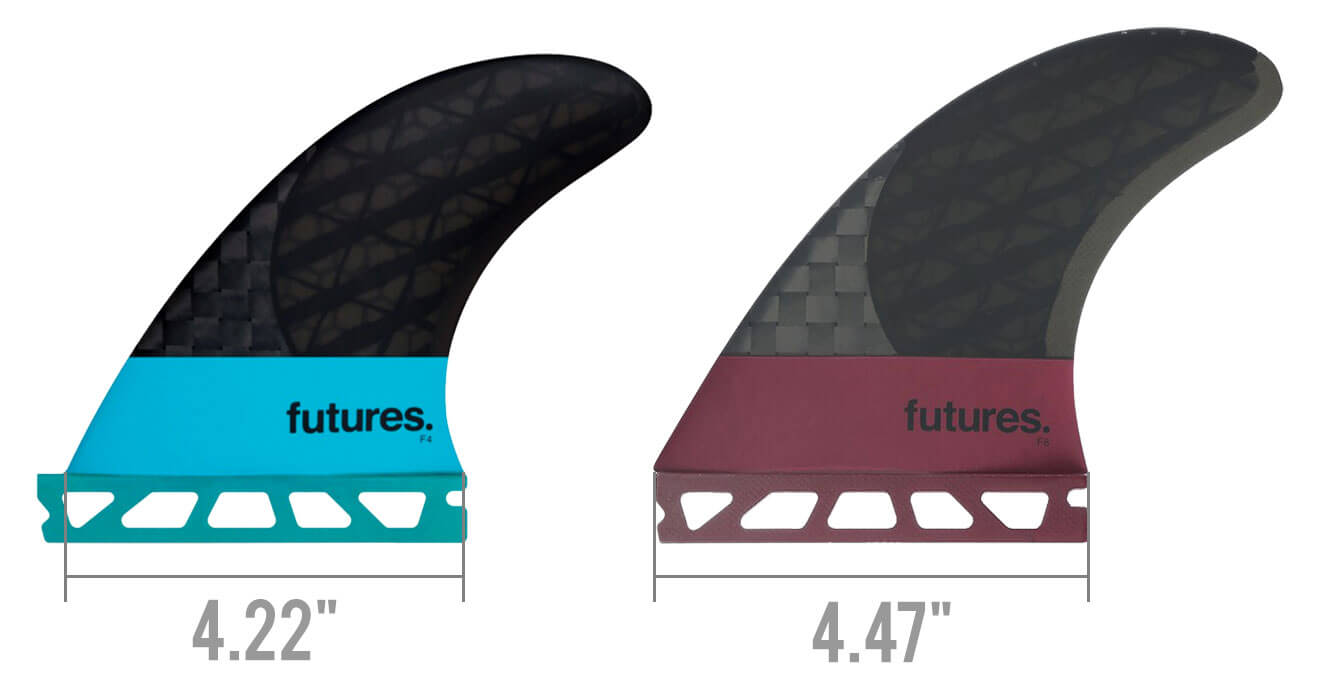
FIN BASE
The length of the base of the fin (where the fin and bottom of board meet - typically the widest point of the fin) affects the way the board turns and drives out of turns. A larger base provides more surface area to push against the water when executing a turn, resulting in more hold during the turn and more drive out of a turn. This is a useful design for power surfers executing long/drawn out turns, but to turn sharper and quicker you may want to consider a fin with a slightly smaller fin base.

RAKE
The rake (or sweep) of a surfboard fin goes hand in hand with the shape. The rake measures how far back the tip of a fin curves in relation to its base, giving the fin its arc. The more rake that a fin has, the longer and more drawn out your turns will be - perfect for those big, lined up days where there is plenty of wall to work with. The less rake a fin has the tighter the fin will turn, therefore making it more maneuverable but sacrificing drive and stability. The fins are better suited for punchy, beach break conditions.
FLEX
The flex of a surfboard fin, or lack thereof, is important for the affect it has on the feel of a surfboard. The flex that a surfboard fin has will directly relate to your projection into and out of turns, which in turn will produce speed and affect the control you have of the board. A stiff fin ultimately gives you the most control and stability while surfing - and therefore are great for when the waves get on the bigger side. Surfboard fins that are more flexible tend to offer a higher level of "board feel" and allow the surfer to push harder thru turns and get a bit more speed out of each transition. This however also leads to a feeling of less control over the surfboard.
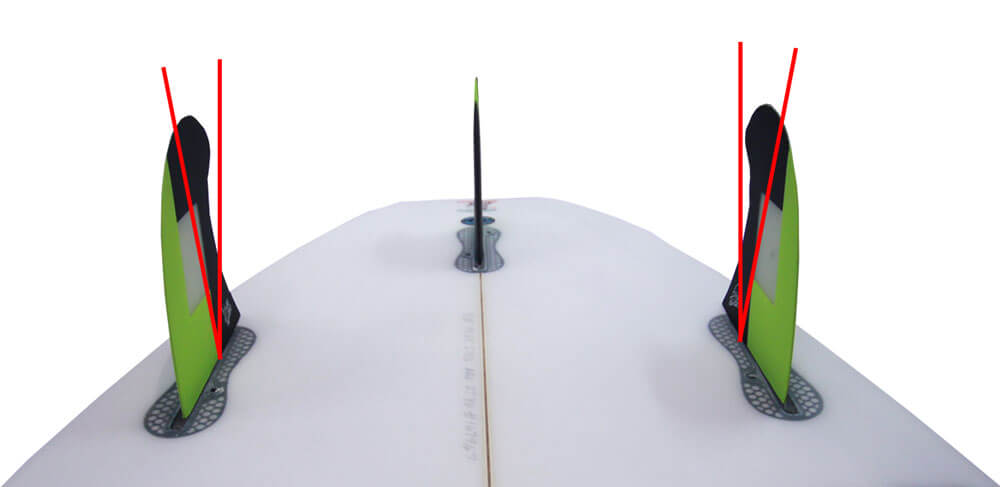
CANT
“Cant” refers to the angle that the fin is “leaning out” in relation to the bottom of the surfboard. A fin that is straight up and down (90 degrees to the surfboard) has no cant. The less cant that a surfboard fin has the more drive and acceleration you will have, but lessens maneuverability. A fin with a good amount of cant will feel looser and more maneuverable. The general rule of thumb agreed upon by most shapers is: Less cant is better for small/mushy waves, more cant is better for steep/fast waves. These angles usually vary from 0 to 9 degrees with most boards.

FOIL
The foil of a surfboard fin can be very complex, and is usually overlooked. Foil refers to the thickness of the fin and how it is dispersed. Foil affects the flow of water over the fin surface and has a huge impact on the performance of your fins and board. Middle fins are always symmetrical and rounded on both sides, while side fins are typically rounded on the outside and flat or curved on the inside. Having a flat inside helps with control and speed, while having a more curved inside adds some lift with less drag and more speed generation and fluidity.
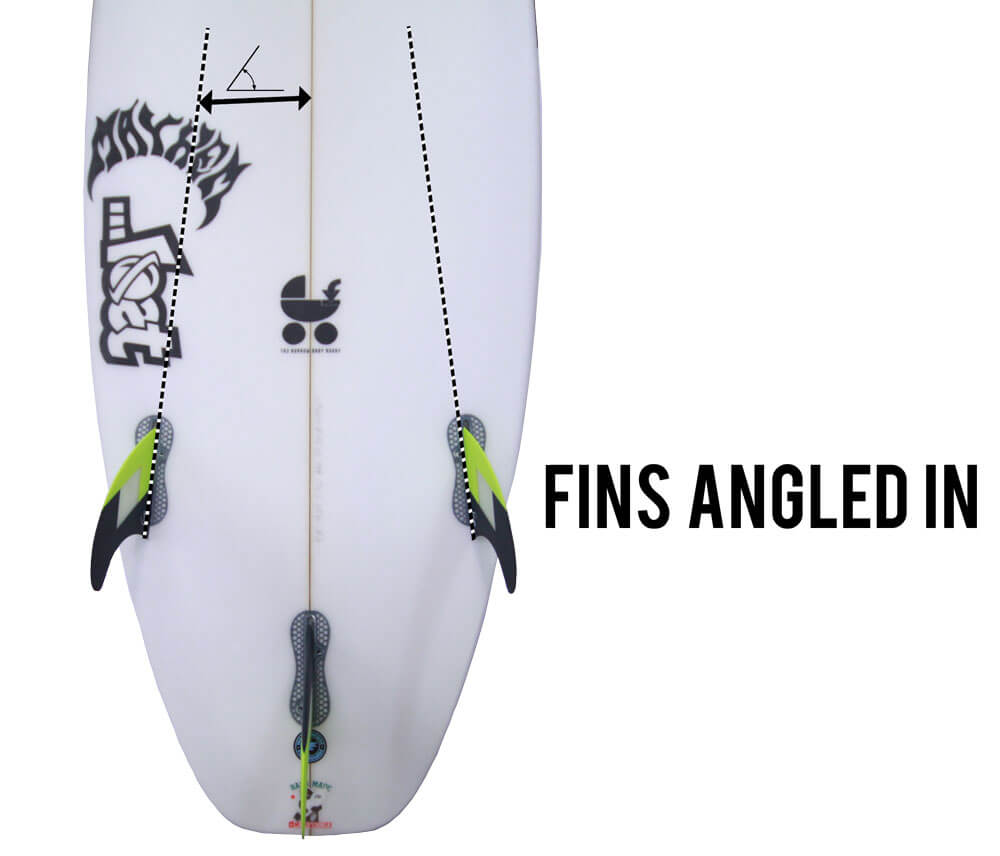
TOE
The surfboard “fins toe” refers to the angle of the fin compared to the stringer of the surfboard. While these change from board to board and shaper to shaper, they are typically toe-in, meaning that the front of the side fins are turned in towards the stringer, making the angle smaller. This causes the water to put pressure on the outside of the fins, which in turn makes the board feel more responsive and lively.
TO SUM IT ALL UP...
Fins make a huge difference in your surfing!! Whether its helping you get that extra speed in weaker surf, or tightening up your turning allowing you to get more vertical in critical conditions - fins play a major role. We’re hoping this guide to surfboard fins helped point you in the right direction. Still have question? Feel free to give us a call at the shop or use the chat function at the bottom right of your page.
TROUBLESHOOTING....
Board feel stiff? Try using some smaller fins with less sweep and/or more flex to loosen it up.
Board feel too loose? Try a bigger set of fins with a stiffer flex, or a fin with more sweep.
Board lacking drive and speed? Bigger is not always better. Make sure you have the proper size fin for your weight, and try a set of fins with more sweep and a larger base. Stiffness can help too!
Having trouble getting vertical? Try some fins that are more upright (less sweep/rake)
Board not holding in bigger/steeper waves? Try a bigger fin with minimal flex and more rake. Larger fins will help hold you into the steeper faced waves and the rake and stiffness will give you stability and control.
LONGBOARD FINS
Interested in learning about how these concepts translate to longboard fins? Visit our longboard fin guide to learn more about the different types of fins and how they can benefit your log!

LEARN MORE
With our other surf guides
We want you to be dialed with your equipment! Whether your in the market for a new surfboard or a new wetsuit, we've got you covered with everything you need to know before making a decision.